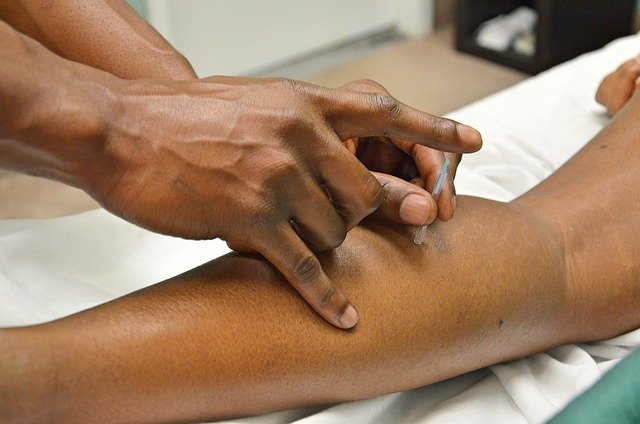Understanding Neuropathy in Legs and Feet: Key Causes, Symptoms, and Effective Treatment Options for Relief in 2025
Understanding neuropathy in legs and feet: causes, symptoms, and treatment options is essential for those affected by this challenging condition. Neuropathy, often associated with diabetes, alcoholism, or vitamin deficiencies, can lead to debilitating symptoms like numbness, burning pain, and weakness. Effective management may include medications, physical therapy, and lifestyle changes aimed at alleviating symptoms and addressing underlying causes.

Peripheral neuropathy in the lower extremities represents a complex medical condition that disrupts normal nerve function, leading to various uncomfortable and sometimes debilitating symptoms. The condition occurs when nerves outside the brain and spinal cord become damaged, affecting their ability to transmit signals properly between the central nervous system and the legs and feet.
What Are the Primary Causes of Foot Neuropathy?
Diabetic neuropathy stands as the most common cause, affecting approximately 60-70% of people with diabetes. High blood sugar levels over time damage nerve fibers, particularly those in the feet and legs. Other significant causes include autoimmune disorders such as rheumatoid arthritis and lupus, which trigger inflammatory responses that attack healthy nerve tissue.
Vitamin deficiencies, particularly B vitamins, can lead to nerve damage. Chronic kidney disease, liver disorders, and thyroid problems also contribute to neuropathy development. Additionally, certain medications used in chemotherapy, some antibiotics, and anti-seizure drugs may cause nerve damage as side effects.
How Do You Recognize Symptoms of Leg Nerve Damage?
Early symptoms often begin gradually and may include tingling sensations, numbness, or burning pain in the toes that gradually spreads upward. Many people describe feeling like they’re wearing invisible socks or gloves. Sharp, jabbing pains may occur, particularly at night, disrupting sleep patterns.
As the condition progresses, individuals may experience muscle weakness, difficulty walking, and balance problems. Some people report increased sensitivity to touch, where even light contact with clothing or bedsheets becomes painful. Loss of reflexes and coordination problems may also develop, increasing the risk of falls and injuries.
What Treatment Options for Neuropathy in Legs and Feet Are Available?
Medical treatments focus on managing underlying conditions and controlling symptoms. For diabetic neuropathy, maintaining optimal blood sugar levels remains crucial. Healthcare providers may prescribe anticonvulsants like gabapentin or pregabalin, which help reduce nerve pain. Antidepressants such as duloxetine and amitriptyline can also provide pain relief.
Topical treatments including capsaicin cream and lidocaine patches offer localized relief for some patients. In severe cases, prescription opioids may be considered, though these are typically reserved for short-term use due to addiction risks. Physical therapy helps maintain muscle strength and improve balance, while occupational therapy teaches adaptive techniques for daily activities.
Which Home Remedies Can Provide Relief?
Several home-based approaches may complement medical treatment. Regular gentle exercise, such as swimming or walking, helps maintain circulation and nerve function. Warm baths can temporarily relieve pain, though individuals with reduced sensation should be cautious about water temperature to prevent burns.
Dietary modifications play an important role in management. Reducing alcohol consumption and maintaining a balanced diet rich in B vitamins supports nerve health. Some people find relief through acupuncture, massage therapy, or meditation practices that help manage chronic pain. Proper foot care becomes essential, including daily inspection for injuries and wearing well-fitting shoes to prevent complications.
| Treatment Type | Provider/Method | Cost Estimation |
|---|---|---|
| Prescription Medications | Healthcare Provider/Pharmacy | $50-$300 per month |
| Physical Therapy | Licensed Physical Therapist | $75-$150 per session |
| Acupuncture | Licensed Acupuncturist | $60-$120 per session |
| Nerve Conduction Studies | Neurologist/Medical Center | $300-$800 per test |
| Topical Treatments | Over-the-counter/Prescription | $15-$100 per month |
Prices, rates, or cost estimates mentioned in this article are based on the latest available information but may change over time. Independent research is advised before making financial decisions.
When Should You Seek Professional Medical Care?
Early intervention often leads to better outcomes in neuropathy management. Individuals should consult healthcare providers when experiencing persistent numbness, tingling, or pain in their feet or legs. Sudden onset of symptoms, signs of infection, or wounds that don’t heal properly require immediate medical attention.
Regular monitoring becomes important for people with diabetes or other conditions that increase neuropathy risk. Healthcare providers can perform nerve conduction studies and other diagnostic tests to assess the extent of nerve damage and develop appropriate treatment plans.
While neuropathy in legs and feet can significantly impact quality of life, various treatment options exist to help manage symptoms and slow progression. Combining medical treatments with lifestyle modifications and home remedies often provides the most comprehensive approach to managing this challenging condition. Working closely with healthcare providers ensures that treatment plans are tailored to individual needs and underlying causes.
This article is for informational purposes only and should not be considered medical advice. Please consult a qualified healthcare professional for personalized guidance and treatment.




